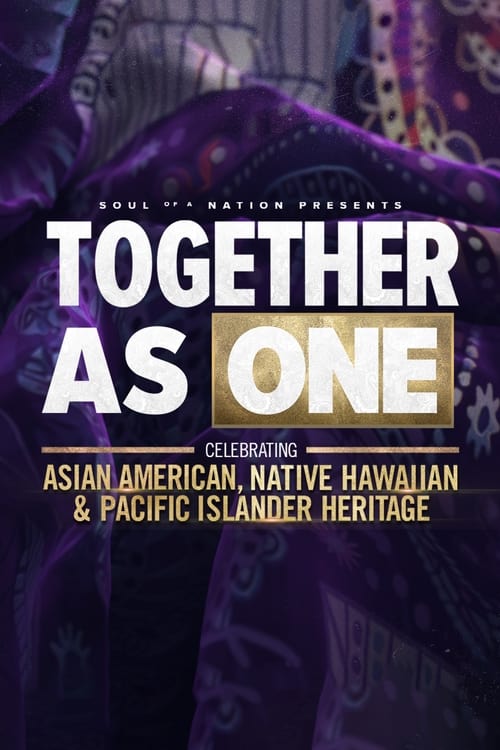
Ask Your Own Question
What is the plot?
What is the ending?
In the ending of "Soul of a Nation Presents: Together As One: Celebrating Asian American, Native Hawaiian and Pacific Islander Heritage," the film culminates in a powerful celebration of unity and cultural pride. The various segments highlight the resilience and contributions of Asian American, Native Hawaiian, and Pacific Islander communities, showcasing their stories, art, and heritage. The film concludes with a call to action for solidarity and understanding among diverse communities, emphasizing the importance of recognizing and honoring these cultures.
As the film approaches its conclusion, the scenes shift to a vibrant celebration filled with music, dance, and storytelling. The camera captures the joyous expressions of individuals from various backgrounds, each representing their unique heritage. The atmosphere is electric, with colorful traditional attire and rhythmic performances that resonate with the audience.
In one poignant scene, a group of dancers performs a traditional Hawaiian hula, their movements fluid and expressive, telling stories of their ancestors and the land. The dancers' faces reflect a deep connection to their culture, embodying both pride and a sense of responsibility to preserve their heritage. The camera pans to the audience, who are visibly moved, clapping and swaying along, creating a sense of community and shared experience.
Next, the film transitions to a segment featuring Asian American artists who share their personal narratives through visual art and spoken word. Each artist speaks passionately about their experiences, the challenges they have faced, and the importance of representation. Their words resonate deeply, highlighting the struggles and triumphs of their communities. The emotional weight of their stories is palpable, as they express a longing for understanding and acceptance.
As the celebration continues, the film intersperses clips of community leaders and activists discussing the significance of solidarity among diverse groups. They emphasize the need for unity in the face of adversity, urging viewers to stand together against discrimination and injustice. The tone is hopeful yet urgent, as they call for collective action to uplift marginalized voices.
In the final moments, the film brings all the participants together on stage, creating a powerful visual of unity. They join hands, symbolizing their commitment to support one another and celebrate their shared humanity. The camera captures their smiles, tears of joy, and the palpable sense of hope that fills the air. The screen fades to black with a message encouraging viewers to continue the conversation and engage with their communities.
The film concludes with a sense of empowerment, leaving the audience with a lasting impression of the strength found in diversity and the importance of celebrating one another's heritage. Each character, whether a dancer, artist, or activist, leaves the audience with a sense of purpose and a call to action, reinforcing the film's central themes of unity, resilience, and cultural pride.
Is there a post-credit scene?
"Soul of a Nation Presents: Together As One: Celebrating Asian American, Native Hawaiian and Pacific Islander Heritage" does not feature a post-credit scene. The film concludes with a powerful message celebrating the contributions and stories of Asian American, Native Hawaiian, and Pacific Islander communities, leaving viewers with a sense of unity and reflection on the rich cultural heritage highlighted throughout the documentary. The focus remains on the narratives shared during the film, emphasizing the importance of representation and solidarity among diverse communities.
What specific stories are highlighted in the documentary about Asian American experiences?
The documentary features a variety of personal narratives that showcase the diverse experiences of Asian Americans, including stories of resilience, cultural heritage, and the challenges faced in a multicultural society. It highlights individuals from different backgrounds, such as Chinese, Indian, and Filipino Americans, sharing their journeys and contributions.
How does the documentary portray the contributions of Native Hawaiians?
The documentary emphasizes the rich cultural heritage of Native Hawaiians, showcasing their traditions, struggles for sovereignty, and the impact of colonization. It includes interviews with Native Hawaiian activists and artists who discuss their efforts to preserve their culture and advocate for their rights.
What role do Pacific Islander voices play in the documentary?
Pacific Islander voices are integral to the documentary, as it features stories from individuals representing various Pacific Island nations. Their narratives focus on identity, community, and the unique challenges they face, including issues related to climate change and cultural preservation.
Are there any notable interviews with prominent Asian American figures in the film?
Yes, the documentary includes interviews with prominent Asian American figures, such as actors, activists, and community leaders. These interviews provide insight into their personal experiences and the broader Asian American narrative, highlighting their contributions to arts, politics, and social justice.
How does the documentary address the intersectionality of race and identity among the featured individuals?
The documentary thoughtfully explores the intersectionality of race and identity by showcasing how individuals navigate their multiple identities as Asian Americans, Native Hawaiians, and Pacific Islanders. It delves into their personal struggles and triumphs, illustrating the complexities of belonging and cultural pride.
Is this family friendly?
"Soul of a Nation Presents: Together As One: Celebrating Asian American, Native Hawaiian and Pacific Islander Heritage" is a documentary that focuses on the rich cultural heritage and contributions of Asian Americans, Native Hawaiians, and Pacific Islanders. The film is generally family-friendly, as it aims to celebrate diversity and promote understanding.
However, there are a few aspects that might be sensitive for children or those who are particularly sensitive:
-
Historical Context: The film addresses issues of discrimination and racism faced by Asian American and Pacific Islander communities. Some discussions may touch on painful historical events or experiences that could be upsetting.
-
Personal Stories: The documentary includes personal narratives that may recount experiences of hardship, loss, or struggle related to identity and belonging, which could evoke strong emotions.
-
Social Issues: There are segments that discuss contemporary social issues, including hate crimes and the impact of stereotypes, which may be difficult for younger viewers to fully comprehend.
Overall, while the film is educational and uplifting, parents may want to prepare younger viewers for some of the more serious themes presented.























